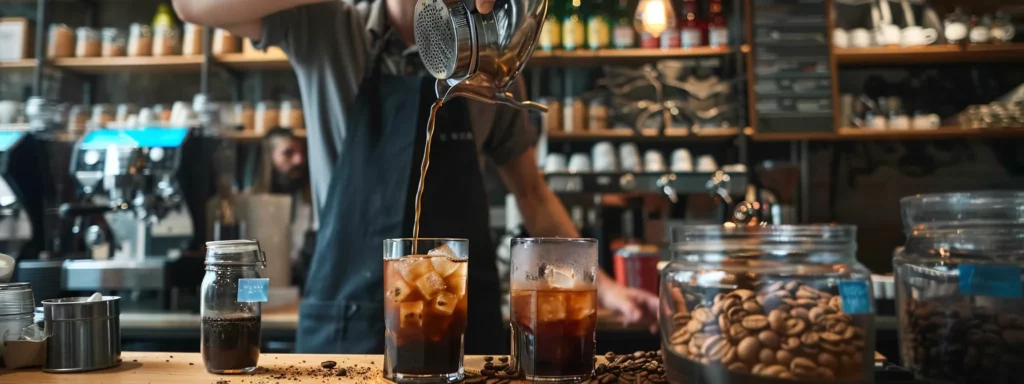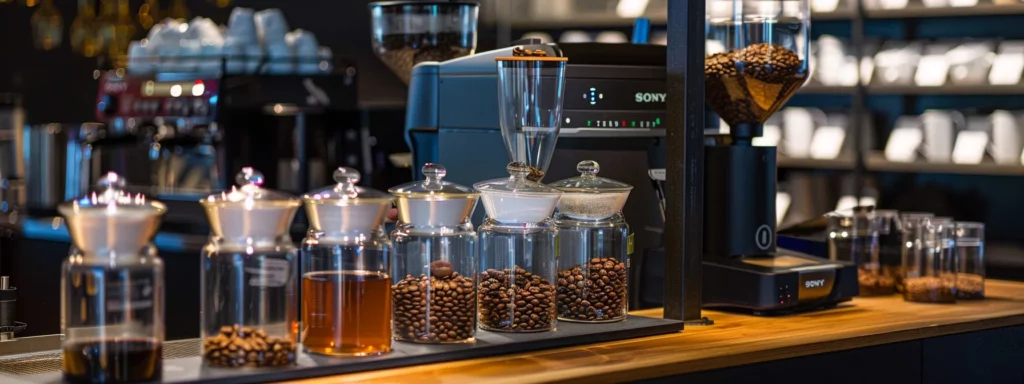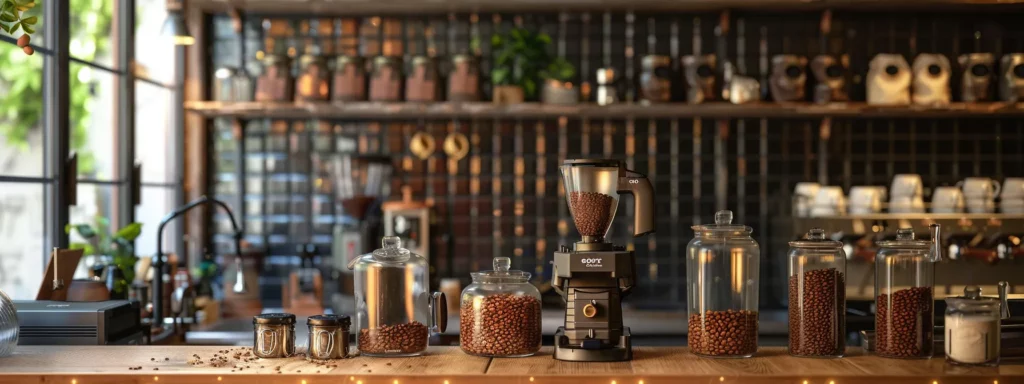
How Much Coffee Caffeine Is in Your Cup?
Does your cup of coffee pack more caffeine than you expect? This blog post explains how much coffee caffeine sits in an average cup, compares commercial brands, and looks at factors that affect caffeine content. Readers will learn how these points influence their daily brew and discover the benefits of moderate caffeine consumption. The content offers straightforward answers to help coffee drinkers make informed choices about their caffeine intake.
Key Takeaways
- brewed coffee offers a balanced caffeine boost for alertness and daily routine
- espresso gives an intense flavor with a quick, concentrated caffeine hit
- instant and decaf options provide controlled caffeine intake for varied tastes
- caffeine levels change with bean type, roast, and brewing method
- simple tests help track how coffee influences energy and overall well-being
How Much Caffeine Is in a Normal Cup of Coffee?

Different coffee types carry unique caffeine levels. Brewed coffee offers a balanced boost, while espresso packs a quick kick. Instant coffee provides convenience, and decaf coffee undergoes decaffeination for a lighter option, often considered by baristas advising those facing palpitations or breastfeeding challenges. A closer look shows how disease factors may also influence caffeine effects.
Brewed Coffee
Brewed coffee typically contains solid amounts of caffeine, offering a noticeable boost for alertness that many coffeehouse regulars appreciate. Research shows that when questions like “how many caffeine in one cup of coffee” or “how many caffeine mg in a cup of coffee” are addressed, this type of coffee consistently provides a well-balanced kick.
Experts note that a standard serving of brewed coffee can significantly influence one’s daily caffeine intake, making the choice popular among those needing a quick energy lift. This straightforward option often suits individuals looking for a reliable caffeine source without sudden spikes or breaks in concentration during the day.
Espresso
Espresso stands out with its intense flavor and rapid caffeine delivery, perfected through precise coffee preparation using high-quality coffea arabica beans. This method extracts a concentrated amount of caffeine and a hint of glucose that many coffee lovers find just right for a robust start to the day.
The small yet mighty espresso shot may use just a teaspoon of finely ground coffee to pack an impressive caffeine punch:
| Aspect | Detail |
|---|---|
| Coffee Type | Espresso |
| Beans | Coffea Arabica |
| Measure | Teaspoon of ground coffee |
| Caffeine Content | High concentration |
| Additional Component | Glucose boost |
This strong shot is ideal for those who appreciate an efficient pick-me-up without compromising on a rich, authentic flavor.
Instant Coffee
Instant coffee offers a reliable caffeine fix with a level that quietly supports alertness while balancing adenosine effects. Its preparation meets food and drug administration standards, ensuring a safe, measured caffeine hit perfect for adjusting mood without overwhelming the system, much like a well-timed espresso does.
This type of coffee serves those curious about how many cup of coffee a day is healthy, providing an option that delivers a steady, controlled energy boost. Enthusiasts appreciate the simple, efficient brewing style that makes it a practical choice for anyone looking to enjoy their caffeine without disrupting daily routines.
Decaf Coffee
Decaf coffee provides a gentle caffeine option that helps those sensitive to high caffeine levels or monitoring their heart rate while still enjoying the flavor they love. This alternative can be a smart choice during exercise or when managing blood pressure, similar to the mild boost found in black tea.
The reduced caffeine in decaf coffee means it delivers less of an energy jolt, making it appealing for those who want to avoid overstimulation. Many enthusiasts choose decaf when balancing their routine caffeine intake, supporting relaxed moments while keeping a steady pace in daily activities.
A normal cup gives a solid dose, but the story does not end there. Readers soon learn how commercial brands stack up in their caffeine kick.
Are Commercial Brands More Caffeinated?

Commercial brands often offer a higher concentration of caffeine in their coffee cups, which gives that reliable stimulant effect for a quick lift during busy mornings.
Some brands design their iced coffee with a bolder caffeine kick, making the drink a popular choice for those who wonder how many coffee cups a day they can enjoy safely.
The coffee available from these brands typically balances flavor and caffeine concentration, catering to habitual coffee drinkers seeking a dependable stimulant.
Experts explain that the nutrition of a coffee can vary, so comparing how many coffee cups a day one consumes helps maintain a steady routine while enjoying a good cup of coffee.
Commercial brands pack a punch that leaves readers questioning the secret behind the flavor. The true story unfolds when one looks at the elements that shape caffeine’s strength.
What Factors Affect Caffeine Content?

Caffeine content in coffee can vary due to bean type and roast level, which affect solubility during brewing. Some studies published by sources like mayo clinic support these variations.
The antioxidant levels in coffee influence its health benefits, and these vary with the preparation method. Experts note that the brew method can change the extraction process and solubility of caffeine.
Individual metabolism plays a role in how caffeine is processed in the body, with some people experiencing different effects even from the same cup. Research hints that weight may also affect the intensity of caffeine’s impact.
Environmental factors and brewing techniques can alter caffeine extraction, and the final caffeine content may seem unpredictable. Reliable sources such as mayo clinic provide guidance on maintaining a balance without compromising on antioxidant benefits.
The numbers make one wonder about the effects of caffeine. The next part asks if these effects should give us pause.
Is Caffeine Something to Worry About?

Experts note that a mug of coffee can give a boost, and dopamine levels often rise after a good cup, making it a popular drink among many.
Research shows that caffeine intake in a typical mug can align with dietary guidelines for americans when enjoyed moderately throughout the day.
Studies indicate that a coffee break can feel as satisfying as a small piece of chocolate while keeping inflammation low with balanced consumption.
Scientists emphasize that people should be mindful of their routine, as a moderate caffeine dose supports well-being without causing undue worry about health concerns.
Caffeine may have its risks, but the story does not stop at worries. Soon, the page turns to unexpected perks that make coffee more than just a daily habit.
Surprising Benefits of Coffee

Coffee offers a solid taste that many enjoy daily, and research suggests that it may support balanced cholesterol levels. This benefit stands out when compared to tea, appealing to those who appreciate a robust flavor from a french press brew.
The mild caffeine boost in coffee can lower the risk of certain health issues while providing a smooth taste that coffee fans favor. Many enjoy how a french press method captures rich flavors without extra additives, drawing a parallel to the natural flavor of tea.
This brew method maintains a simple taste that may reduce the risk of developing high cholesterol over time. Coffee enthusiasts find that the straightforward taste of a properly brewed cup can sometimes rival the smooth flavor of tea.
Brewing with a french press can enhance the natural taste of coffee, which may contribute to maintaining good cholesterol levels. The casual drinkers appreciate the reliable taste and note that even a small cup can lower the risk of feeling sluggish during the day.
Coffee’s plain benefits stand tall, much like the simple truths found in every review. The next part breaks down the honest work behind these insights for every true coffee lover.
How We Reviewed This Article

The article review outlines practical methods used in assessing coffee caffeine levels, covering topics like how a drug may affect performance and comparing coffea with yerba mate or aeropress styles. Readers can read this next for insights on how many coffees a day is bad while exploring clear, expert evaluations on each approach.
Read This Next
This section offers readers a clear glimpse into the methods used to review coffee caffeine levels in a way that someone managing a diet or even kidney disease might find helpful. The team incorporated practical tests using items like cold brew coffee, milk, and sugar to create balanced coffee experiences tailored to everyday needs.
The review journey was mapped out using straightforward steps that highlight how caffeine interacts with various dietary elements:
- Testing with different brew types, including cold brew coffee
- Measuring the impact of milk and sugar on flavor and caffeine delivery
- Observing results relevant to those managing kidney disease and diet
This methodical approach gives a practical overview for coffee enthusiasts seeking to understand their daily caffeine intake.
Key Takeaways on Caffeine Content and Coffee Health Effects
Coffee caffeine content matters for a balanced daily routine. Accurate knowledge empowers consumers to tailor their beverage choices to individual energy needs. The discussion highlights the varying caffeine levels in brewed, espresso, instant, and decaf options. This understanding drives informed decisions that support both taste and well-being.
